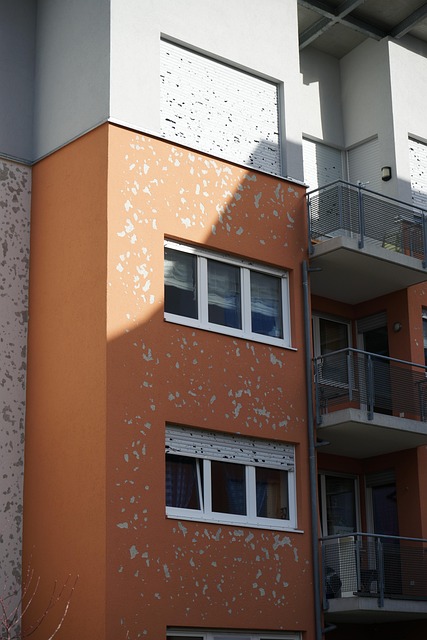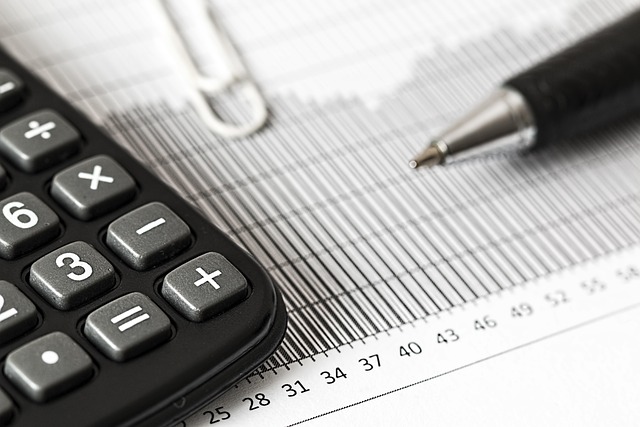Commercial Insurance offers crucial protection for businesses against property losses due to risks like fires, theft, disasters, and liability claims. Policies cover buildings, equipment, inventory, and business interruption, with customizable options based on location, assets, and perils. Exclusions vary, requiring careful review. Proactive policy management ensures adequate coverage, peace of mind, and uninterrupted operations during challenges. Staying informed about industry trends helps make informed insurance decisions.
Commercial property insurance is a vital safety net for businesses, protecting their physical assets from unforeseen events. This comprehensive guide delves into the essentials of commercial property coverage, exploring various policy types and risk assessment factors. Learn about the significant advantages for businesses, potential exclusions to watch out for, and tips for selecting the ideal insurer. We also break down the claims process and offer insights on customizing policies. Stay ahead with the latest trends in commercial insurance.
Understanding Commercial Property Insurance Basics

Commercial property insurance is a vital component for businesses, providing protection against potential risks and financial losses associated with commercial properties. This type of insurance covers various aspects, including buildings, structures, equipment, and inventory, which are essential for day-to-day operations. It serves as a safety net, shielding business owners from significant outlays in the event of unforeseen circumstances such as natural disasters, fires, theft, or vandalism.
The basics involve understanding different policy types, coverage limits, deductibles, and exclusions. Policies can be tailored to specific business needs, ensuring comprehensive protection. Commercial insurance offers peace of mind, allowing entrepreneurs to focus on growing their ventures without constant worry about potential property-related setbacks.
Types of Coverage for Commercial Properties

Commercial properties, from office buildings to retail spaces, face a unique set of risks that require tailored insurance coverage. One of the key aspects of commercial insurance is its ability to protect against various perils, offering businesses peace of mind. The most common types of coverage include property damage protection, which covers repairs or rebuilding costs after events like fires, storms, or accidents. Additionally, liability coverage is essential, shielding businesses from financial loss due to lawsuits arising from injuries or property damage on their premises.
Business interruption insurance is another vital component, ensuring income continuity during unforeseen events that halt operations. This coverage compensates for lost revenue and additional expenses incurred while the business is temporarily suspended. Moreover, commercial insurance policies often include provisions for extra expenses, offering financial support to maintain operations during recovery or when facing temporary issues like a need for alternative work spaces.
Assessing Risk: Factors Influencing Policies

Assessing risk is a critical step in determining the parameters of a commercial insurance policy. Several factors influence how insurers price and structure coverage for businesses, ensuring that policies align with individual property needs. These include the type of commercial property—be it an office building, retail space, or industrial facility—its location, construction materials used, and security measures in place. The age and condition of the structure are also key considerations, as older buildings may require additional coverage for aging infrastructure.
Furthermore, insurers evaluate the potential risks specific to the area, such as natural disasters (earthquakes, floods), crime rates, and civil unrest, which can significantly impact policy premiums. Businesses in high-risk areas often face stricter requirements and higher costs. Other influencing factors include the business’s operations and stored materials, which can be hazardous or require specialized coverage for liability and property damage. Understanding these variables is essential for businesses to secure adequate Commercial Insurance protection.
Key Benefits and Advantages for Businesses

Commercial property insurance offers businesses a robust safety net, safeguarding their physical assets from potential risks and perils. This specialized coverage is designed to protect against financial losses stemming from events like fires, storms, theft, or civil unrest, ensuring businesses can continue operations with minimal disruption.
One of the key advantages lies in its comprehensive nature, as it often includes liability protection, covering legal expenses and damages arising from accidents on the premises. This feature is invaluable for businesses aiming to mitigate legal risks and protect their financial stability. Additionally, commercial insurance policies may offer business interruption coverage, providing funds to sustain operations during periods of closure caused by insured events, thereby fostering resilience in challenging times.
Common Exclusions to Be Aware Of

When considering commercial insurance, it’s crucial to understand that not all risks are covered under standard policies. Several common exclusions exist that business owners should be aware of before finalizing their coverage. These can include perils like war, terrorism, or natural disasters, which often require separate endorsements for protection. Additionally, activities with inherent high-risk factors, such as construction sites or chemical storage facilities, may have restricted coverage.
Another area to pay close attention to is the property itself and its contents. Certain types of valuable items, like art, jewelry, or rare collectibles, might not be automatically insured and could require specific policies. Furthermore, liability claims resulting from accidents on premises, employee misconduct, or data breaches are typically excluded and need to be addressed through separate coverage options tailored for these risks.
Choosing the Right Insurance Provider

Choosing the right insurance provider for your commercial property is a crucial step in safeguarding your investment and ensuring peace of mind. Look for insurers specializing in commercial insurance, as they offer tailored coverage options suited to diverse business needs. Check their reputation, financial stability, and customer reviews to gauge their reliability.
Consider factors such as the scope of coverage offered, deductibles, and policy exclusions carefully. Compare quotes from multiple providers, ensuring you understand what’s included and excluded in each. A reputable provider will offer transparent terms, efficient claims processes, and excellent customer service, providing long-term value for your investment in commercial insurance.
Claim Process: Steps to Follow

When it comes to commercial insurance claims, understanding the process is key to ensuring a smooth and efficient resolution. The first step in the claim process is to notify your insurance provider as soon as possible after an incident occurs. This prompt action helps to set the timeline for the rest of the procedure. You should provide detailed information about the damage or loss, including dates, times, and descriptions of what happened.
Next, gather all necessary documentation, such as reports from law enforcement or fire departments, repair estimates, and any other evidence relevant to your claim. Your insurance company will assign an adjuster who will review your claim and assess the damage. They may visit the property to inspect it firsthand and discuss the potential coverage with you. It’s important to maintain open communication throughout this process, providing any additional information or documentation requested by your insurer.
Customizing Policies to Suit Individual Needs

Commercial property insurance is not a one-size-fits-all proposition. Each business has unique needs, assets, and risks. That’s why customizing policies to suit individual needs is paramount. Insurers offer flexible coverage options that can be tailored to protect against specific perils like fire, theft, natural disasters, or even civil unrest.
Business owners should carefully review their policy and work closely with their insurance broker to identify potential gaps in coverage. By taking this proactive approach, businesses can ensure they’re adequately protected, safeguard their investments, and maintain uninterrupted operations in the face of unforeseen events.
Staying Informed: Trends in Commercial Insurance

Staying informed about industry trends is crucial for business owners navigating the complex landscape of commercial insurance. The market for commercial property insurance has been evolving significantly in recent years, driven by changing economic conditions and natural disaster patterns. For instance, the rise of cyber risks has led to increased demand for coverage that protects against data breaches and other digital threats.
Additionally, there’s a growing emphasis on sustainable buildings and operations, with insurers offering incentives for businesses adopting green practices. As global awareness of climate change increases, commercial insurance policies are becoming more tailored to cover environmental liabilities and the costs associated with sustainability upgrades. Staying abreast of these trends enables business owners to make informed decisions when selecting coverage options that align with their specific needs and help mitigate potential risks.
